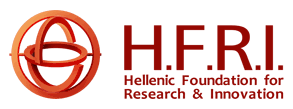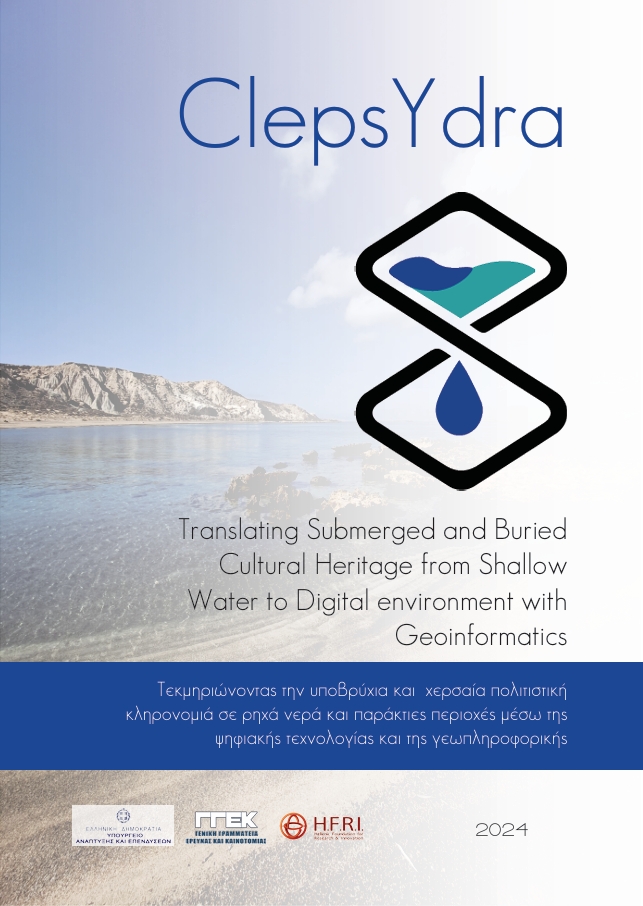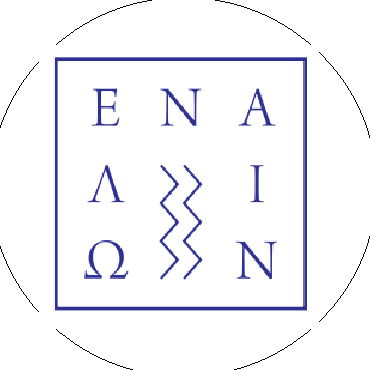The exhibition "Dive into the Past... Vision for the Future", held at the City Hall of Ierapetra, southeastern Crete, throughout November and December 2024, concluded successfully, attracting considerable public interest. The official opening on November 22 featured insightful presentations by Dr. Nikos Papadopoulos, Research Director of the Geosat Research Group, and Dr. Theotokis Theodoulou from the Ephorate of Underwater Antiquities, who highlighted key technological and archaeological findings from the research project.
About the project
ClepsYdra is a 24 month period research program with the aim to maximize the accessibility to information regarding the current state of now submerged sites by minimizing the gap of available protocols and procedures for shallow-water cultural heritage investigations. Furthermore, ClepsYdra focuses on developing ways to explore and promote these under-studied submerged contexts, improve community awareness and involvement in protection practices, digital curation and informed tourism.
Case-studies are selected in Eastern Crete, where the geomorphological processes shaped large-scale changes (mostly) on the coast. Numerous locations testify here this sensible landscape modification so that past coastal settlements/infrastructures are now covered with water and/or sand layers and are potentially excluded by the scientific community’s discourse on past coastal exploitation. ClepsYdra sides the archaeological research with state-of-the-art methodologies and innovative technological integrated framework for the documentation and promotion of CH, adapting equipment and practices to the shallow underwater context.
The contribution to the documentation of current state of CH will pass through: a) aerial/satellite remote sensing –specifically targeted to historical reconstruction of coastal zone and seabed–, b) digital photogrammetry –with customization of remotely controlled floating device and specific protocols to account for the camera/lens distortion in water medium–, c) geophysical mapping –with adaptation of sensors and protocols for the wet environment– and d) risk assessment –integration of collected spatial information for the estimation of risks for CH–, e) Virtual/Augmented Reality platform –fed with the above for the promotion of submerged CH in unprecedented ways.
ClepsYdra is funded by the Hellenic Foundation for Research and Innovation (H.F.R.I) under the framework of the 2nd Call for H.F.R.I. Research Projects to support Faculty Members and Researchers.
Project Actions
Satellite Remote Sensing
Compile time-based maps and extract spatial information to be used in risk assessment calculation with the collection of available satellite imagery.
Aerial Archaeology and Digital Photogrammetry
Reconstruct historical coastline change and the biography of visible remains for the areas under investigation. Produce a bathymetry model to be used as base for CH documentation and as calibration for geophysical measurements.
Geophysical Mapping
Reveal the archaeological structures that are now buried below the coastal zone and the seabed in the shallow water environment of the selected sites thus connecting and completing the archaeological information between the land and the sea.
Risk Assessment
Identify the natural hazards of the CH sites and evaluate their overall risk assessment.
Virtual/Augmented Reality platform
Design and develop a digital application that intends to offer an engaging and educative experience to its users through a series of interactive virtual experiences, accessing the underwater archaeological sites remotely
Underwater and coastal archaeological investigation
Archaeological underwater investigation of the five sites. Data collection, organization and merging to the production of interpretative reports for each site.
Latest News
MetroArchaeo 2023 Conference in Rome
Participation in the conference Metrology for Archaeology and Cultural Heritage - MetroArchaeo 2023 in Rome. Presentation of two posters under the framework of the "SPECIAL SESSION #21: Remote sensing methods and approaches for Underwater Cultural Heritage research and management" organized by Crescenzo Violante (ISPC – CNR), Barbara Davidde (Ministry of Culture, Italy) and Nikos Papadopoulos (IMS-FORTH).
Ierapetra and Underwater Archaeology
Participation of ClepsYdra in the workshop organized by the Association for the Promotion of Antiquities, History and Culture of Ierapetra "Ierapytna" on Sunday, September 17th, 2023.
Workshops
APPLICATION OF GEOINFORMATION SYSTEMS TO ASSESS NATURAL AND ANTHROPOGENIC HAZARDS IN CULTURAL HERITAGE SITES
The one-day training workshop “Geoinformatics in assessing hazards in cultural heritage” will be held in the premises of the Institute for Mediterranean Studies on Friday, November 15th, 2024. It will provide an introduction to geoinformation systems as well as a presentation of user-friendly approaches and tools to use diverse data in order to address the dangers that archaeological and cultural heritage sites are exposed to. The seminar is provided with no registration cost and is open for students and professionals.
For logistic reasons, places will be limited to 10-15 attendees, and selection will be done based on the application form and the “first-come, first-served” policy. The deadline to submit the application through the registration form is Tuesday, November 12th, 2024.
More information on the seminar and the schedule can be found here.
3D TECHNOLOGIES FOR CULTURAL HERITAGE: LASER SCANNING AND PHOTOGRAMMETRY FROM THE MOUNTAIN TO THE SEA… AND BELOW
The one-day training workshop “3D Technologies for Cultural Heritage” will be held in the premises of the university excavation in Elefterna on Monday, November 18th, 2024. It will provide hands-on experience and a preferable best-practice or workflow for extracting three-dimensional information from archive historical photographs and recently acquired ones, by means of user-friendly software solution. Photogrammetry will be sided with Terrestrial Laser Scanning with an overview of field data collection, processing, and integration with other technologies. The seminar is provided with no registration cost and is open for students and professionals.
For logistic reasons, places will be limited to 10-15 attendees and the selection will be done on the basis of the application form and with the policy of “first-come, first-served”. The deadline to submit the application through the registration form is Wednesday, November 13th, 2024.
More information on the seminar and the schedule can be found here.
Publications
Seismic refraction tomography and multichannel analysis of surface waves for imaging offshore Cultural Heritage in very shallow water: Results from a synthetic study and real data
In archaeology, applied geophysics helps to discover new findings of our hidden cultural heritage. However, these methods have been particularly developed in terrestrial environments, leaving the shallow marine ones almost unexplored. This paper examines the effectiveness of Multichannel Analysis of Surface Waves MASW and Seismic Refraction Tomography SRT οn imaging submerged and buried antiquities in a very shallow marine environment.
Satellite-Derived Bathymetry for the Islands of South-Eastern Crete
Recent advances in remote sensing techniques and higher availability of satellite sensors has increased their applicability to several scientifc sectors, including marine research and coastal cultural heritage management. Satellite-derived bathymetry is relatively simple, cost-effective, and time-effective method to extract high resolution bathymetry model. The method has been applied to Koufonisi and Chrisi islands off the coast of south-eastern Crete in southern Greece. The islands’ waters have not yet been investigated for their potential value to cultural heritage in the area.






